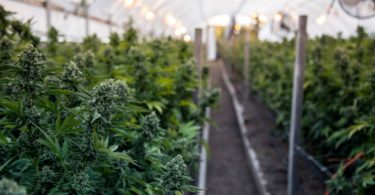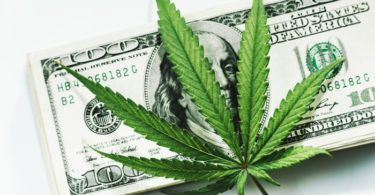Don’t look now, but marijuana stocks are once again on fire. Following a rough 2018 campaign that saw 10 pot stocks lose at least half of their value, investors are clearly excited about what the postlegalization environment in Canada and ongoing state-level legalizations in the U.S. might bring for 2019 and beyond.
Though estimates vary wildly depending on the source, a co-authored report from Arcview Market Research and BDS Analytics is calling for 38% global legal weed sales growth in 2019 to $16.9 billion. Further, worldwide sales are expected to climb to $31.3 billion by 2022, signaling that growth isn’t set to slow anytime soon.

IMAGE SOURCE: GETTY IMAGES.
As marijuana sales pick up, these trends proliferate
With cannabis legitimized, a number of clearly defined trends have emerged. For instance, dealmaking has been on the rise since last summer. We’ve witnessed a number of alcohol companies partnering with cannabis growers to research and develop infused beverages. Also, in December, tobacco giant Altria announced that it’d be making a $1.8 billion equity investment in Cronos Group, which could lead to the duo working on weed vape products in the future.
Along those same lines, acquisitions have picked up. Aurora Cannabis was an active buyer last year, gobbling up Saskatchewan-based CanniMed Therapeutics for $852 million, MedReleaf for $2.5 billion, and South America’s ICC Labs for $221 million. Earlier this month, Aurora also announced its intent to acquire Whistler Medical Marijuana for $132 million.
Another popular trend is uplisting. This involves marijuana stocks moving from the over-the-counter (OTC) exchange to a more reputable exchange, such as the New York Stock Exchange (NYSE) or Nasdaq. Last year, five pot stocks made the move.
Why uplist, you wonder? The simple answer is that it improves liquidity and places marijuana stocks side by side with time-tested businesses on a major exchange. Perhaps an even more important aspect is that it allows Wall Street firms to cover and possibly invest in NYSE- and Nasdaq-listed pot stocks. This isn’t always the case with OTC-listed companies.

IMAGE SOURCE: NASDAQ.
This little-known pot stock has its eyes on the Nasdaq
In 2019, uplisting is expected to remain a hot topic, with a number of lesser-known pot stocks attempting to make the move to more reputable exchanges. Just over a week ago, one of these relative unknowns announced via press release that it, too, was intending to uplist.
On Jan. 21, British Columbia-based Village Farms International (NASDAQOTH:VFFIF), an OTC-listed pot stock with a market cap of just shy of $240 million, announced that it was filing paperwork to uplist to the Nasdaq.
If you haven’t heard of Village Farms International before, at least in the context of being a cannabis player, don’t be surprised. That’s because the company isn’t an independent player. Rather, it formed a joint venture with Emerald Health Therapeutics (NASDAQOTH:EMHTF) — a marijuana stock investors are more likely to be familiar with — in 2017. This joint venture, known as Pure Sunfarms, is currently retrofitting 1.1 million square feet of greenhouses that Village Farms had been using for vegetable growing. It will be used for cannabis production moving forward. Since Village Farms already had the greenhouses, relying on Emerald Health to handle the retrofit was a means to save time and money.

IMAGE SOURCE: GETTY IMAGES.
According to an update from Village Farms and Emerald Health this past week, 825,000 square feet of Pure Sunfarms has now been licensed by Health Canada, the regulatory agency responsible for assigning cultivation licenses and sales permits. That’s about 80% of the way to the 1.03 million square feet the duo will be devoting to growing space. The remaining 69,000 square feet will be utilized for extraction purposes.
It’s also worth noting that Emerald Health and Village Farms have the option to put 3.7 million square feet of adjacent leased land to work in terms of capacity expansion. It’s unclear if this’ll happen, but if it did, it would easily make Pure Sunfarms a top-10 producer.
Here’s what you may not know about Village Farms
However, it’s also important for investors to understand that, unlike most marijuana growers, Village Farms has a fallback. Yes, it lost revenue that had previously been devoted to vegetable growing at its Delta-3 greenhouse (which is what’s being retrofitted for pot production), but the company still managed to generate $111.2 million in sales through the first nine months of 2018 at its other greenhouses.
Admittedly, vegetable growing isn’t traditionally a high-margin business, and it does put Village Farms at the mercy of wholesale vegetable pricing. Nevertheless, the company has generated consolidated EBITDA (earnings before interest, taxes, depreciation, and amortization) of $1.4 million through nine months. That’s not a lot considering its $111.2 million in sales, but it’s still a positive figure, even with spending associated with Pure Sunfarms and the lost revenue from the Delta-3 greenhouse. Should the company’s cannabis venture flop, which is probably unlikely, it still has a viable business model to fall back on.

But before you get too excited, also keep in mind that Pure Sunfarms’ 1.03 million square feet of growing capacity is “only” expected to yield 75,000 kilograms annually at its peak. Compared to other growers, this isn’t a particularly impressive yield, which leads me to believe that Emerald Health’s and Village Farms’ growing costs on a per-gram basis may be on the high end of the industry average.
What’ll really be intriguing and help make or break Village Farms’ valuation will be its ability to further penetrate the cannabidiol (CBD) and hemp markets, especially with the Farm Bill having been signed into law by President Trump in December. CBD is the nonpsychoactive cannabinoid best known for its perceived medical benefits. Global CBD sales are expected to hit as much as $22 billion by 2022, with the legalization of hemp opening the door to a fast-growing industry in the United States.
For the time being, investors would be encouraged to add Village Farms International to their watch lists and monitor its progress from the safety of the sidelines.
More at Fool.com






